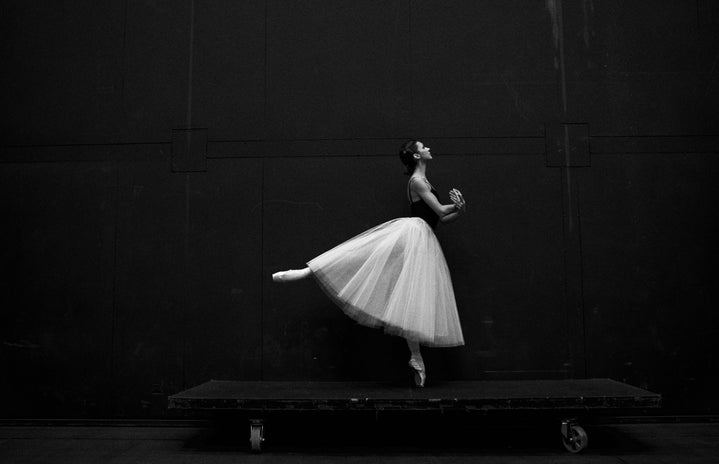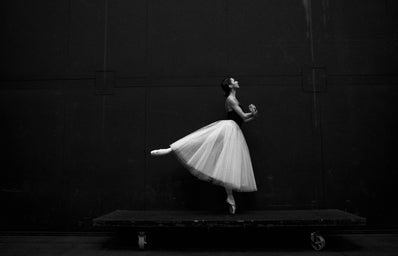We all know that ballet is magical! Either if you are a dancer or not you may know famous pieces such as “The Nutcracker” or “Swan Lake”, or even the most enthusiastic people may know “Giselle” or “La Bayadère”. But these are only a few of many other pieces that are in the repertoire of great dance companies around the world. Still, there are lesser-known productions that deserve more praise and surely will enchant your heart and become part of your own repertoire to watch now and then.
Here are a few unknown and different ballet pieces for you to check out and have a good time!
- “Anastasia”
-
Many are familiar with the tragic story of the Russian Royal Family and the rumors about the youngest daughter of the Czar, Anastasia. She was believed to have been the only survivor of the massacre that killed the entire Romanov family in 1918, during the Russian Revolution. This thrilling story inspired not only books and movies, but also ballet!
Kenneth Macmillan, a renowned ballet choreographer, created a one-act production of “Anastasia” in 1967 for the Deutsche Oper Ballet. Later on, in 1971, he expanded the original version into three acts, which became part of many companies’ repertoire, such as The Royal Ballet. The soundtrack is absolutely brilliant, composed by Tchaikovsky and Martinu. It is based upon the story of Anna Anderson, a woman who claimed to be the lost Grand Duchess Anastasia Romanov. The ballet starts when she is under a mental institution in Berlin, where she is haunted by memories of her traumatic past. A daunting, yet beautiful production.
Curiosity: Macmillan believed that Anderson was indeed the Grand Duchess, but years later, after his death, it was revealed by a DNA test that she had no connection at all with the Russian family.
- “Anna Karenina”
-
Created by the choreographer Boris Eifman, in 2005, the ballet was a huge success and became part of the repertoire of many dance companies around the world, such as Bolshoi, Mariinsky, and Zurich Ballet. “Anna Karenina” was inspired by a famous novel with the same name by Liev Tolstói, and the ballet story follows the same as the book.
Anna wasn’t happy about her marriage, she felt very alone. On a trip to Moscow, she meets Count Alexei Vronsky and falls in love with him. Anna decides to relinquish her husband and her son to start a passionate romance with her lover. However, everything falls apart when the relationship cools out and she needs to take action about it. With music by Tchaikovsky, it’s a tragic and fascinating piece.
- “The Rite of Spring”
-
Originally choreographed by Vaslav Nijinkski and with a soundtrack composed by Igor Stravinsky, this haunting and pagan ballet caused great polemic in the 20th century. The audience booed the ballet so much that the dancers couldn’t even hear the orchestra playing!
Premiered in 1913, it’s one of the most famous works by Stravinsky, along with “Firebird” (1910) and “Petrushka” (1911). The ballet focuses on Pagan Russia and rituals involving the death of a virgin to celebrate the welcoming of spring. Despite all the critics, it’s still performed by international companies, including The Royal Ballet and San Francisco Ballet. The Rite of Spring is a bit more on the contemporary side, with different and magnetizing choreography.
- “The Pharaoh’s Daughter”
-
Created by Marius Petipa, one of the most famous ballet choreographers, and composed by Pugni, “The Pharaoh’s Daughter” could dare to be said as an almost “La Bayadère”, it also involves a tragic love triangle. This 1812 ballet piece follows a young English lord, John Bull, who is in an African safari and it is guided out of a sandstorm and sheltered at an old pyramid. There, the guide asks him to quiet down in respect of the Pharaoh’s daughter who lies in a tomb somewhere inside there. The guide gives opium to the lord and strange things happen that make him go back in time, where he meets the Pharaoh’s daughter, called Aspicia, and they fall in love. The audience gets to accompany both John and Aspicia as they fight against all odds to stay together since she was already betrothed to the Nubian King. It’s a very classical three-act piece, you get to dive into the magical and dramatic universe of ballet.
The Pharaoh’s Daughter has received much critics about blackface in the ballet. Especially Russian companies used white ballerinas to portrait black characters, and that’s completely offensive. Unfortunately, blackface is still done in a few versions of ballet nowadays and must be abolished, since it’s an incredibly racist practice.
Curiosity: The ballet was forgotten for over 100 years, only coming back to the stages in 2000, when Pierre Lacotte found Petipa’s original staging notes and ballet notations, which he deciphered and made “The Pharaoh’s Daughter” come back to life.
- Matthew Bourne’s “Swan Lake”
-
Everyone is familiar with the “Swan Lake” story: a beautiful princess is transformed into a swan and falls madly in love with a prince, but what if the princess was…a guy? Bourne’s take on this classical ballet comes in form of a homosexual story, and all the swans are played by men. The narrative centers on a young prince who claims freedom against his royal obligations and is desperate for a connection with his mother, the queen. Sadler’s Wells Theater is the most known company to perform this brilliant piece.
It is indeed a groundbreaking production that provides and strikes a questioning on the heteronormative of ballet and could almost be a way to honor Tchaikovsky’s homosexuality, the composer of “Swan Lake”.
- “Manon”
-
This ballet piece is inspired by the 1713 novel “Manon Lescaut”, by the author Abbé Prevost. With Kenneth MacMillan’s choreography and Jules Massenet’s music, the production was first performed by The Royal Ballet, in 1974. It follows the story of Manon, a young woman who is caught between the world of luxury and love. She recklessly chooses the riches of being a mistress over true love and has to pay a price for it. The ballet is an amazing piece, with many intense and thrilling pas de Deux. Manon is described by The Independent as “an urgent tragedy, a passionate tale of a life at the precarious edges”.
Many of these ballet pieces are available on YouTube where you can watch them with your family or while you’re alone and they will surely make you fall in love even more with this classical dance.
—————————————————————————————————————————
The article above was edited by Amanda Moraes.
Liked this type of content? Check Her Campus Casper Libero’s home page for more!


